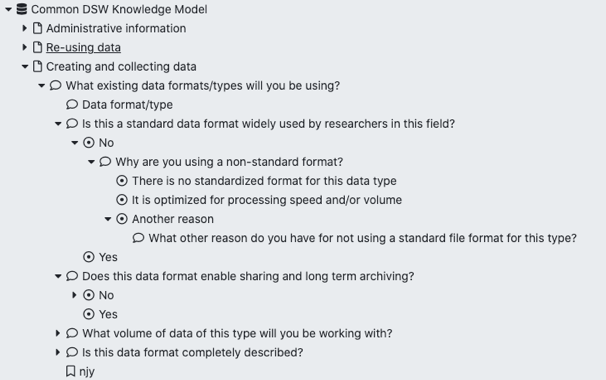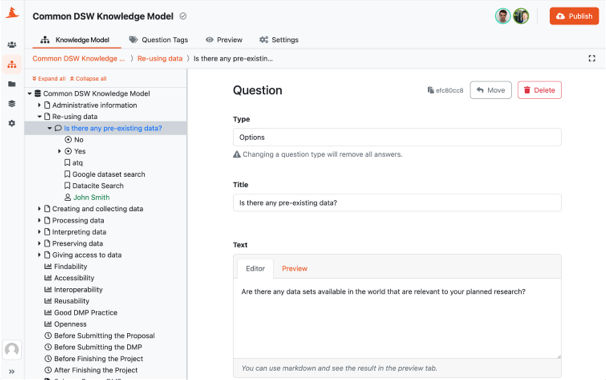Knowledge Models are basically templates determining the structure of Questionnaires. When creating a new Questionnaire, you are always choosing the Knowledge Model the most suitable for you and your research.
A Knowledge Model is divided into chapters, which are composed of questions. The questions include possible answers, references, and FAIR metric labels where relevant. There are also follow-up questions that depend on the previous answer. This way you do not have to answer questions irrelevant to your research.

It is a common practice that Knowledge Models have to change sometimes. When a parent Knowledge Model has a new version, its customizations have the option to upgrade so all the Knowledge Models can still be up to date. There is also a very similar process for Questionnaires when their Knowledge Model changes.

You can build your own Knowledge Model or you can choose a ready-to-use one. There are a couple of default Knowledge Models that you can choose from. The Common DSW Knowledge Model originates from a mind map made by Rob Hooft, or its customization for Life Sciences.

The Knowledge Model Editor is a tool for building your own new Knowledge Models or extending the existing ones so that they can cover new areas of expertise or better fit your organization’s needs.
